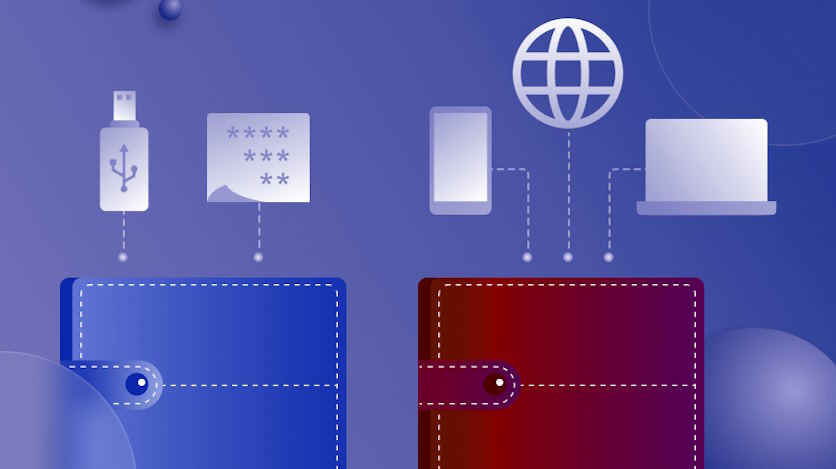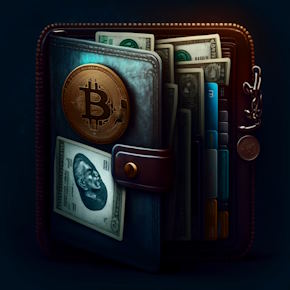
Best Practices for Storing and Securing Your Cold Wallet
In the rapidly evolving world of cryptocurrency, safeguarding your digital assets has become paramount. As the value of cryptocurrencies continues to soar, the need for robust security measures has never been greater. One of the most reliable methods of protecting your crypto holdings is by utilizing a cold wallet. Cold wallets, which store private keys offline, offer enhanced security compared to their online counterparts. However, even with a cold wallet, it is crucial to understand the best practices for storing and securing it effectively.
Storing Your Cold Wallet Safely
When it comes to safeguarding your cold wallet, physical storage plays a crucial role. Here are some best practices to ensure the secure storage of your cold wallet and protect your cryptocurrency investments.
Secure physical storage options:
 Safe deposit boxes: Consider renting a safe deposit box at a bank or a secure facility. These boxes offer a high level of physical security and protection against theft, fire, and natural disasters. They are typically well-guarded and provide an additional layer of protection for your cold wallet.
Safe deposit boxes: Consider renting a safe deposit box at a bank or a secure facility. These boxes offer a high level of physical security and protection against theft, fire, and natural disasters. They are typically well-guarded and provide an additional layer of protection for your cold wallet.- Fireproof and waterproof safes: Investing in a high-quality fireproof and waterproof safe is another excellent option. These safes are specifically designed to withstand extreme conditions, such as fires or floods, and keep your cold wallet and backup materials safe.
- Hidden and inconspicuous locations: If you prefer to keep your cold wallet at home, consider hiding it in a secure and inconspicuous location. Choose a spot that is unlikely to be discovered by burglars or visitors. Avoid obvious hiding places and think creatively to ensure maximum security.
Backing up your wallet and storing backups securely:
Backing up your cold wallet is essential to avoid any potential loss of funds. Create encrypted backups of your wallet’s private keys and store them securely. Consider using offline storage devices, such as encrypted USB drives or external hard drives, and keep them in a separate location from your primary cold wallet.
Importance of redundancy and multiple storage locations:
To further enhance the security of your cold wallet, employ redundancy by having multiple backups and storage locations. In case of any unfortunate events, such as theft, loss, or damage to one storage location, having additional backups ensures that you can still recover your funds. Distribute your backups across different secure locations, both physically and digitally, for added peace of mind.

Securing Your Cold Wallet
While storing your cold wallet in a safe place is crucial, it is equally important to implement robust security measures to protect it against physical and digital threats. By following these best practices, you can fortify the security of your cold wallet and keep your cryptocurrency assets safe.
Protecting against physical theft:
- Using strong passwords and PINs: Set a strong and unique password or PIN for your cold wallet. Avoid using common or easily guessable combinations. Make it a habit to regularly change your passwords and avoid sharing them with anyone. A strong password adds an extra layer of defense against unauthorized access.
- Enabling additional security features: Many cold wallets offer additional security features such as two-factor authentication (2FA) or biometric authentication. Enable these features to provide an added level of protection for your wallet. 2FA, for example, requires a secondary verification step, typically through a mobile app, which significantly enhances the security of your cold wallet.
Mitigating digital risks:
- Regularly updating wallet firmware and software: Keep your cold wallet’s firmware and software up to date. Manufacturers often release updates that address security vulnerabilities or enhance features. Stay informed about the latest updates and apply them promptly to ensure the highest level of security for your wallet.
- Beware of phishing attempts and suspicious links: Exercise caution when interacting with emails, messages, or websites related to your cold wallet. Be vigilant against phishing attempts that aim to trick you into revealing sensitive information. Avoid clicking on suspicious links and double-check the authenticity of the sources before entering any personal details.
- Keeping devices and operating systems up to date: Maintain the security of your devices by regularly updating their operating systems, antivirus software, and security patches. Outdated software can be vulnerable to attacks and compromises the security of your cold wallet.
Avoiding public Wi-Fi and using secure networks:
Public Wi-Fi networks are often unsecured and pose risks to your wallet’s security. Avoid accessing your cold wallet or conducting any cryptocurrency-related transactions on public networks. Instead, use secure and trusted networks, such as your home Wi-Fi or a virtual private network (VPN), to ensure a protected and encrypted connection.
